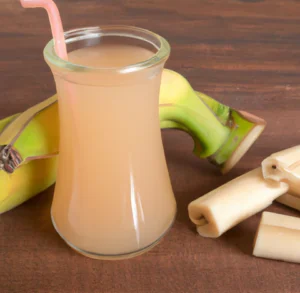
With only Four easy steps, let’s learn how to cook wheat berries. You should start including wheat berries, a tasty and nutty whole grain, in your diet right away.
Herbed wheat berry salad is one of our favourite ways to use wheat berries, but they also work fantastically in soups and even puddings. You might wish to learn how to prepare bulgur wheat and buckwheat groats if you enjoy including such superfoods in your dishes.
Health Benefits of Wheat Berries
Wheat berries offer several health benefits due to their nutritional composition and whole grain nature. Here are some of the key health benefits associated with consuming wheat berries:
- Excellent Source of Fiber: Wheat berries are rich in dietary fiber, which is essential for maintaining a healthy digestive system. Fiber aids in regular bowel movements, promotes satiety, and helps control blood sugar levels. Including fiber-rich foods like wheat berries in your diet can support digestive health and contribute to overall well-being.
- Nutrient Dense: Wheat berries are packed with essential nutrients. They provide a good amount of B vitamins, including thiamin, niacin, and folate, which are important for energy production, brain function, and cell metabolism. Wheat berries also contain minerals like iron, magnesium, and phosphorus, which are vital for various bodily processes.
- High in Antioxidants: Wheat berries contain antioxidants, including phenolic compounds and flavonoids, which help protect the body against oxidative stress caused by free radicals. Antioxidants have been linked to a reduced risk of chronic diseases, such as heart disease, certain cancers, and age-related conditions.
- Heart Health: Consuming whole grains, such as wheat berries, has been associated with a lower risk of heart disease. The fiber, vitamins, minerals, and antioxidants present in wheat berries contribute to heart health by reducing cholesterol levels, improving blood pressure, and promoting proper blood circulation.
- Blood Sugar Control: The fiber content in wheat berries helps regulate blood sugar levels by slowing down the absorption of glucose. This can be particularly beneficial for individuals with diabetes or those at risk of developing the condition. Including wheat berries in a balanced meal can contribute to better glycemic control.
- Weight Management: Due to their high fiber content, wheat berries can promote feelings of fullness and satiety. Including wheat berries in your meals may help control appetite and prevent overeating, thus supporting weight management goals.
- Reduced Chronic Disease Risk: Consuming whole grains, like wheat berries, has been associated with a lower risk of chronic diseases, including type 2 diabetes, certain types of cancer (such as colorectal cancer), and cardiovascular disease. The combination of fiber, antioxidants, and other beneficial compounds in wheat berries contributes to their protective effects.
When incorporating wheat berries into your diet, it’s important to note that they contain gluten, which can be problematic for individuals with celiac disease or gluten sensitivity. If you have any concerns or dietary restrictions, it’s best to consult a healthcare professional or registered dietitian for personalized advice.
AlSo Read: How to Store Cooked wheat berries
How to Cook Wheat Berries
Step-1 Selecting and Preparing the Wheat Berries
Selecting and Preparing Wheat Berries
- Choosing the Right Wheat Berries:
When selecting wheat berries, it’s important to consider the type of wheat and its intended use. There are several varieties of wheat berries available, including hard red, soft red, hard white, and soft white. Each type has its own unique flavor and texture. Hard wheat berries are ideal for bread-making, while soft wheat berries are better suited for pastries and cereals. Choose the variety that aligns with your recipe or personal preference. - Inspecting and Cleaning:
Before cooking, it’s essential to inspect the wheat berries for any signs of damage, impurities, or insects. Look for grains that are plump, uniform in size, and free of mold or discoloration. To remove any impurities or debris, rinse the wheat berries under cold water in a fine-mesh sieve or colander. This step ensures that you’re working with clean grains. - Soaking the Wheat Berries (Optional):
Soaking the wheat berries before cooking is optional but recommended, as it helps reduce the cooking time and enhances their texture. To soak, place the rinsed wheat berries in a bowl and cover them with enough water. Allow them to soak for at least 6-8 hours or overnight. If you’re short on time, you can skip this step, but keep in mind that the cooking time may be longer. - Draining and Preparing for Cooking:
After soaking (if applicable), drain the wheat berries and give them a final rinse under cold water. At this stage, the wheat berries are ready to be cooked using your preferred method, such as stovetop, pressure cooker, or slow cooker. Follow the specific instructions for your chosen cooking method to achieve the desired results.
By selecting and preparing the wheat berries properly, you set the foundation for a delicious and nutritious dish.
Also Read: How Long Can You Store Wheat Berries Before it Goes Bad?
Step-2 Washing and Soaking the Wheat Berries
Washing and soaking wheat berries are important steps in their preparation before cooking. Here’s how to wash and soak the wheat berries:
- Washing the Wheat Berries:
Place the wheat berries in a fine-mesh sieve or colander and rinse them thoroughly under cold running water. Gently rub the grains between your fingers to remove any dirt, debris, or dust. Continue rinsing until the water runs clear. This step helps remove impurities and ensures clean wheat berries for cooking. - Soaking the Wheat Berries:
Soaking the wheat berries is an optional step but can help reduce the cooking time and improve their texture. Soaking softens the grains and makes them easier to digest. Here’s how to soak the wheat berries: a. Transfer the rinsed wheat berries to a bowl or a container large enough to accommodate them.
b. Add enough water to the bowl to cover the wheat berries completely. The water level should be at least an inch above the grains.
c. Let the wheat berries soak for a minimum of 6-8 hours or overnight. This extended soaking time allows the grains to absorb water and become plump and tender.
d. If desired, you can add a tablespoon of acidic liquid like lemon juice, vinegar, or whey to the soaking water. This helps activate enzymes that break down phytic acid, making the wheat berries more nutritious and easier to digest.
e. After soaking, drain the wheat berries and rinse them under cold water to remove any residual soaking liquid.
Note: If you’re short on time, you can use a quick-soaking method. Bring a pot of water to a boil, add the rinsed wheat berries, and boil them for about 2 minutes. Remove from heat, cover the pot, and let the wheat berries soak for 1 hour. Drain and rinse before cooking.
By washing and soaking the wheat berries, you ensure they are clean and prepped for cooking. The soaking process helps improve their texture and reduces the cooking time, resulting in flavorful and tender grains.
Step-3 Cooking Methods for Wheat Berries
a. Stovetop Cooking:
Stovetop cooking is a traditional and straightforward method for cooking wheat berries. Here’s how to cook them on the stovetop:
- In a large pot, combine the soaked or unsoaked wheat berries with water or broth. The ratio is typically 1 cup of wheat berries to 3 cups of liquid, but you can adjust it based on your desired consistency.
- Bring the mixture to a boil over high heat.
- Once boiling, reduce the heat to low, cover the pot with a lid, and let it simmer. Cooking times can vary depending on whether the wheat berries were soaked or not:
- For unsoaked wheat berries, simmer for approximately 45-60 minutes until tender but still chewy.
- For soaked wheat berries, the cooking time will be shorter, around 20-30 minutes.
- Check the tenderness of the wheat berries occasionally during cooking. They should be soft but still have a slight bite (al dente) when fully cooked.
- Once done, drain any excess liquid and fluff the wheat berries with a fork. They are now ready to be used in your desired recipe or served as a side dish.
b. Pressure Cooking:
Pressure cooking is a quicker method that saves time while still producing tender wheat berries. Here’s how to cook them using a pressure cooker:
- Place the soaked or unsoaked wheat berries in the pressure cooker along with water or broth. Use a ratio of 1 cup of wheat berries to 2 cups of liquid.
- Close the pressure cooker lid securely and set it to high pressure.
- Cook the wheat berries under high pressure for about 20-25 minutes for unsoaked berries or 10-15 minutes for soaked berries.
- Once the cooking time is complete, release the pressure using the natural release method or follow the manufacturer’s instructions for quick release.
- Open the lid carefully when the pressure has fully released. Check the tenderness of the wheat berries, and if needed, cook for an additional few minutes under pressure.
- Drain any excess liquid and fluff the wheat berries with a fork. They are now ready to be used in various dishes or enjoyed on their own.
c. Slow Cooking:
Slow cooking is a convenient method that allows you to cook wheat berries with minimal effort. Here’s how to cook them in a slow cooker:
- Combine the soaked or unsoaked wheat berries with water or broth in the slow cooker. Use a ratio of 1 cup of wheat berries to 3 cups of liquid.
- Set the slow cooker to low heat.
- Cook the wheat berries for approximately 4-6 hours if unsoaked or 2-4 hours if soaked. Slow cooking times may vary depending on your specific slow cooker model.
- Check the tenderness of the wheat berries occasionally. Adjust the cooking time if necessary, as some slow cookers may cook faster or slower.
- Once the wheat berries are tender and cooked to your liking, drain any excess liquid and fluff them with a fork.
- The slow-cooked wheat berries are now ready to be incorporated into your desired recipes or served as a nutritious side dish.
By following these cooking methods, you can prepare tender and flavorful wheat berries to be used in a variety of dishes, such as salads, pilafs, soups, or as a standalone grain side.
Also Read: Is wheat a Vegetable or A fruit?
Step-4 Seasoning and Flavoring Options for Wheat Berries
Seasoning and Flavoring Options for Wheat Berries:
- Salt and Pepper: A simple seasoning of salt and pepper can enhance the natural flavor of wheat berries. Add these seasonings to taste during or after the cooking process.
- Herbs and Spices: Experiment with herbs and spices to add depth and complexity to your wheat berries. Options such as thyme, rosemary, cumin, paprika, or turmeric can infuse aromatic flavors into the grains.
- Garlic and Onion: Sautéing minced garlic and finely chopped onion before adding the wheat berries to the cooking liquid can provide a savory base and enhance the overall taste.
- Vegetable or Chicken Broth: Instead of plain water, cook your wheat berries in vegetable or chicken broth to infuse them with additional flavors. This adds richness and depth to the final dish.
- Citrus Zest or Juice: Freshly grated citrus zest, such as lemon or orange, can brighten up the flavor of wheat berries. You can also squeeze a bit of citrus juice over the cooked wheat berries for a tangy twist.
- Tamari or Soy Sauce: For an umami boost, drizzle a small amount of tamari or soy sauce over the cooked wheat berries. This adds depth and a savory note to the dish.
- Olive Oil or Butter: After cooking, toss the wheat berries with a drizzle of extra-virgin olive oil or a pat of butter to add richness and enhance the mouthfeel.
- Nutritional Yeast: Sprinkle some nutritional yeast over cooked wheat berries for a cheesy and nutty flavor. It’s a great option for a vegan or dairy-free seasoning.
Tips for Achieving the Desired Texture:
- Cooking Time and Liquid Ratio: Adjust the cooking time and liquid ratio to achieve the desired texture of the wheat berries. Longer cooking times will result in softer, more tender grains, while shorter cooking times will yield a chewier texture.
- Soaking: Soaking the wheat berries before cooking can help soften them and reduce the overall cooking time. If you prefer a more tender texture, consider soaking the wheat berries for a few hours or overnight.
- Testing for Doneness: Occasionally check the texture of the wheat berries while they are cooking. They should be soft but still slightly chewy (al dente) and not overly mushy. Taste a few grains to ensure they are cooked to your preference.
- Resting Period: After cooking, allow the wheat berries to rest for a few minutes before serving. This helps them absorb any remaining liquid and allows the flavors to meld together.
- Fluffing with a Fork: Use a fork to gently fluff the cooked wheat berries. This separates the grains and prevents them from clumping together, resulting in a more appealing texture.
- Cooling: If you plan to use the wheat berries in a salad or cold dish, cool them down completely before adding other ingredients. This prevents them from becoming sticky and helps maintain their individual texture.
Remember that personal preference plays a role in determining the desired texture and flavor of wheat berries. Feel free to experiment with different seasonings and cooking techniques to create a dish that suits your taste.
Also Read: How To Make Breads From Wheat Berries
Serving Suggestions for Cooked Wheat Berries
Serving Suggestions for Cooked Wheat Berries:
- Grain Bowls: Create hearty grain bowls by combining cooked wheat berries with roasted vegetables, protein (such as grilled chicken, tofu, or chickpeas), and a flavorful dressing or sauce. Top with fresh herbs or a sprinkle of nuts for added crunch.
- Salads: Add cooked wheat berries to your favorite salads for a satisfying and nutritious boost. They pair well with leafy greens, diced vegetables, feta cheese, and a tangy vinaigrette. Try incorporating them into a Mediterranean or grain-based salad.
- Side Dish: Serve cooked wheat berries as a wholesome side dish alongside roasted meats, grilled fish, or sautéed vegetables. Season them with herbs, spices, or a drizzle of olive oil for extra flavor.
- Pilafs and Stuffings: Utilize cooked wheat berries as a base for pilafs or stuffings. Sauté onions, garlic, and your preferred vegetables, then mix them with the wheat berries and seasonings. This is a great option for holiday meals or as a filling for stuffed vegetables like bell peppers or mushrooms.
- Breakfast Cereal: Enjoy cooked wheat berries as a warm breakfast cereal. Add sweet toppings like fresh fruits, honey or maple syrup, nuts, and a sprinkle of cinnamon for a nutritious and filling start to your day.
- Soups and Stews: Use cooked wheat berries to add texture and substance to soups and stews. They can replace or complement other grains like rice or barley, adding a delightful chewiness to the dish.
Storing and Reheating Cooked Wheat Berries
- Refrigeration: Allow the cooked wheat berries to cool completely, then transfer them to an airtight container or a sealable bag. Store them in the refrigerator for up to 4-5 days.
- Freezing: If you want to store cooked wheat berries for an extended period, freeze them. Place cooled wheat berries in a freezer-safe container or bag, ensuring all air is removed. Label the container with the date and store in the freezer for up to 3 months.
- Reheating: To reheat cooked wheat berries, you have a few options: a. Stovetop: Place the desired amount of wheat berries in a saucepan with a splash of water or broth to prevent sticking. Heat over medium-low heat, stirring occasionally until heated through. b. Microwave: Transfer a portion of the cooked wheat berries to a microwave-safe dish. Add a small amount of water or broth to maintain moisture. Microwave in short intervals, stirring occasionally, until warmed to your liking. c. Oven: Preheat the oven to 350°F (175°C). Spread the cooked wheat berries in a baking dish, cover with foil, and bake for 15-20 minutes or until heated through.
Remember to adjust the reheating time based on the portion size and your desired temperature. If the wheat berries appear dry after reheating, you can add a little water or broth to moisten them.
Exploring Different Recipes with Wheat Berries
:
- Wheat Berry Salad with Roasted Vegetables: Toss cooked wheat berries with roasted vegetables like cherry tomatoes, bell peppers, zucchini, and red onions. Drizzle with a lemon-herb vinaigrette and garnish with fresh herbs like parsley or basil.
- Wheat Berry and Vegetable Stir-Fry: Create a flavorful stir-fry by combining cooked wheat berries with a mix of sautéed vegetables like broccoli, carrots, snap peas, and mushrooms. Add your choice of protein, such as tofu or shrimp, and season with soy sauce, ginger, and garlic.
- Wheat Berry and Spinach Stuffed Portobello Mushrooms: Stuff portobello mushroom caps with a mixture of cooked wheat berries, sautéed spinach, feta cheese, and herbs. Bake until the mushrooms are tender and the filling is heated through.
- Wheat Berry and Butternut Squash Soup: Blend cooked wheat berries with roasted butternut squash, vegetable broth, and aromatic spices like cinnamon, nutmeg, and cumin. Simmer until the flavors meld together, and serve as a comforting and nutritious soup.
- Wheat Berry Breakfast Porridge: Cook wheat berries with milk (dairy or plant-based) and a touch of sweetener like honey or maple syrup until they reach a creamy consistency. Top with fresh fruits, nuts, and a sprinkle of cinnamon for a nourishing breakfast option.
- Wheat Berry and Chickpea Curry: Combine cooked wheat berries and chickpeas with a flavorful curry sauce made from tomatoes, coconut milk, and a blend of spices like cumin, turmeric, coriander, and chili powder. Serve over steamed rice or with naan bread.
- Wheat Berry and Herb Pilaf: Sauté cooked wheat berries with diced onions, garlic, and a medley of fresh herbs like parsley, dill, and mint. Season with lemon juice, salt, and pepper for a vibrant and aromatic side dish.
- Wheat Berry and Roasted Beet Salad: Toss cooked wheat berries with roasted beets, crumbled goat cheese, arugula, and a tangy balsamic vinaigrette. Top with toasted walnuts for added crunch.
- Wheat Berry and Chicken Casserole: Combine cooked wheat berries, cooked chicken, mixed vegetables, and a creamy sauce made from chicken broth, Greek yogurt, and herbs. Top with breadcrumbs and bake until golden and bubbly.
- Wheat Berry Energy Bars: Mix cooked wheat berries with nut butter, honey, dried fruits, nuts, and seeds. Press the mixture into a baking dish and refrigerate until firm. Cut into bars for a nutritious and portable snack.
These are just a few examples of the diverse recipes you can explore with cooked wheat berries. Don’t be afraid to get creative and adapt them to suit your taste preferences or dietary needs.
Frequently Asked Questions about Cooking Wheat Berries
Certainly! Here are some frequently asked questions about wheat berries:
- Are wheat berries gluten-free?
No, wheat berries contain gluten, which is a protein found in wheat and related grains. They are not suitable for individuals with celiac disease or gluten intolerance. - How do I store wheat berries?
To store wheat berries, keep them in an airtight container in a cool, dry place, such as a pantry or cupboard. They have a longer shelf life compared to flour, but it’s still a good idea to use them within a year to maintain their quality. - Can I eat wheat berries raw?
While it’s possible to consume wheat berries raw, they are quite hard and have a chewy texture. Most recipes call for cooking or soaking wheat berries before consuming them to improve their texture and digestibility. - Do I need to soak wheat berries before cooking?
Soaking wheat berries prior to cooking is optional but can help reduce the cooking time. Soaking for at least a few hours or overnight can soften the grains and make them easier to cook. However, if you’re short on time, you can still cook wheat berries without soaking them. - How long does it take to cook wheat berries?
Cooking time for wheat berries varies depending on the desired texture and cooking method. Generally, it takes around 45 minutes to 1 hour on the stovetop, approximately 20-25 minutes in a pressure cooker, and 4-6 hours in a slow cooker. - Can I freeze cooked wheat berries?
Yes, you can freeze cooked wheat berries. Allow them to cool completely, then transfer them to a freezer-safe container or bag. Label the container with the date and store in the freezer for up to 3 months. Thaw in the refrigerator before reheating. - Are wheat berries nutritious?
Yes, wheat berries are highly nutritious. They are an excellent source of dietary fiber, B vitamins, and minerals such as iron and magnesium. They also contain antioxidants and offer various health benefits, including improved digestion, heart health, and blood sugar control. - Can I substitute wheat berries for other grains in recipes?
Wheat berries can be used as a substitute for other grains like rice, barley, or quinoa in many recipes. However, it’s important to consider the cooking time and adjust the liquid ratios accordingly, as wheat berries have a longer cooking time compared to some other grains.
Remember, if you have specific dietary concerns or health conditions, it’s always best to consult with a healthcare professional or registered dietitian for personalized advice.







